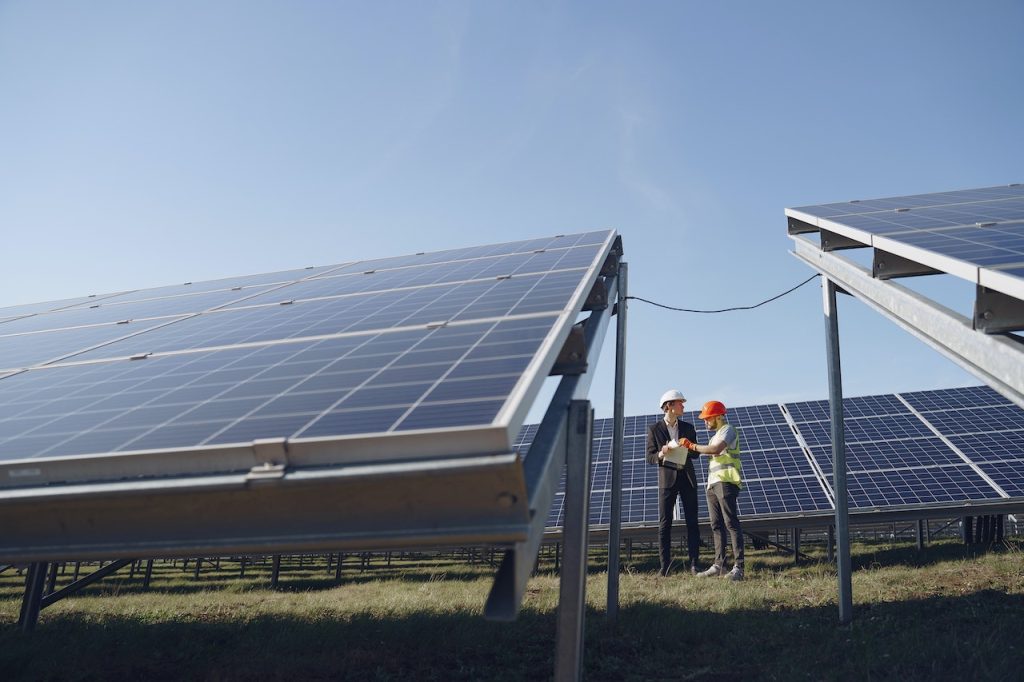Basically, a solar power plant is a device that is used to collect energy from the sun. This energy can be converted to electricity. This is accomplished by using photovoltaic cells that convert light into an electric current.
Concentrated solar power plants
Using the sun’s rays to convert heat into electricity is a revolutionary renewable energy technology. The resulting heat drives a steam turbine that is connected to an electrical generator. This power generation system is referred to as a concentrated solar power plant.
There are various types of concentrated solar power plants. Some use the heat from molten salt to drive a steam turbine. Others heat a working fluid, such as oil or water. Despite the differences, all concentrated solar power plants gather solar photons and convert them into heat that can be stored.
In terms of power output, concentrated solar power plants are still in the early stages. However, they have the potential to greatly increase their output given advancements in thermal energy storage.
Concentrated solar power plants are also capable of directly decarbonizing industrial processes. For example, a very-high temperature process such as chemical processing requires a heat source in the pre-heating phase. The concentrated solar heat stored in molten salt allows the plant to produce heat for the process.
Photovoltaic cells
Typically, solar cells are made from semiconductor materials. These materials have the ability to absorb light and transfer the energy into electricity. They can be made from a variety of different materials.
Silicon is the most common type of material used in photovoltaic cells. The crystalline structure of silicon cells helps them to achieve high efficiencies. They are also cheap to manufacture.
There are also thin film solar cells. These are made from a variety of different materials, such as amorphous silicon and gallium arsenide. Thin film cells are easier to manufacture, but they sacrifice efficiency.
Another type of solar cell is an organic solar cell. This technology uses organic molecules and pigments as a source of light. The conversion efficiency of organic cells is poor. In addition, the cell has a short lifetime.
In addition, the type of installation used for solar panels can affect the amount of electricity they can produce. For example, if solar panels are installed on the roof of a building, the efficiency will be lower than if they are placed on the ground.
Thin-film solar panels
Unlike conventional crystalline silicon panels, thin-film solar panels are light, flexible, and easy to install. They are ideal for large rooftops, institutional buildings, and commercial buildings. They also have the capability to produce electricity in rainy or cloudy weather. These panels are also ideal for use on RVs, buses, and large steel water tanks.
The US government has recently imposed tariffs on imported silicon solar cells. As a result, a number of thin-film solar panel producers have left the market.
The US government’s main goal is to support domestic manufacturing of solar panels. In addition, the government is starting to integrate renewable technologies into the grid. It will also help lower costs and improve the lifespan of solar energy systems.
Thin-film solar cells are a cheaper alternative to traditional solar panels. They are also a more efficient way to generate electricity. They also use less semiconductor material than crystalline silicon cells. This makes them more affordable to produce and install.
Solar thermal systems
Typical solar thermal systems are designed to concentrate the solar energy by 30 to 100 times its normal intensity. These systems use mirrors to focus solar radiation and then use a generator to convert the energy into electricity.
There are two main types of solar thermal systems: active systems and passive systems. Active systems capture solar energy using mirrors or heliostats. Active systems also have generators to convert heat energy into electricity.
Active solar thermal systems are designed to capture and store solar radiation. These systems also have mirrors or heliostats that reflect the solar energy onto a receiver. The receiver consists of a set of tubes filled with a cooling fluid. These tubes then pass behind a heat-conducting material, such as dark metal or plastic. The fluid is then heated in the receiver and becomes steam or water. The steam is then used to power a turbine in a power plant.
Passive systems use large south-facing windows to absorb solar energy. The energy is then radiated into the home. The design of the home is also considered when building a passive system.

